

INTRO.
In 220A, my favorite part of the course was building the hydrophone and recording whale sounds in Monterey. To that end, I was inspired to take this experience a few steps further for my final. I microsampled my 7 minute whale recording from our boat ride to Monterey on October 14th, and used the raw audio material to construct drums, synthesizers and bass tones. This project will culminate in a larger independent study for next quarter at CCRMA!
Let's start by listening to my hydrophone recording from Oct 14th, 2021 here:
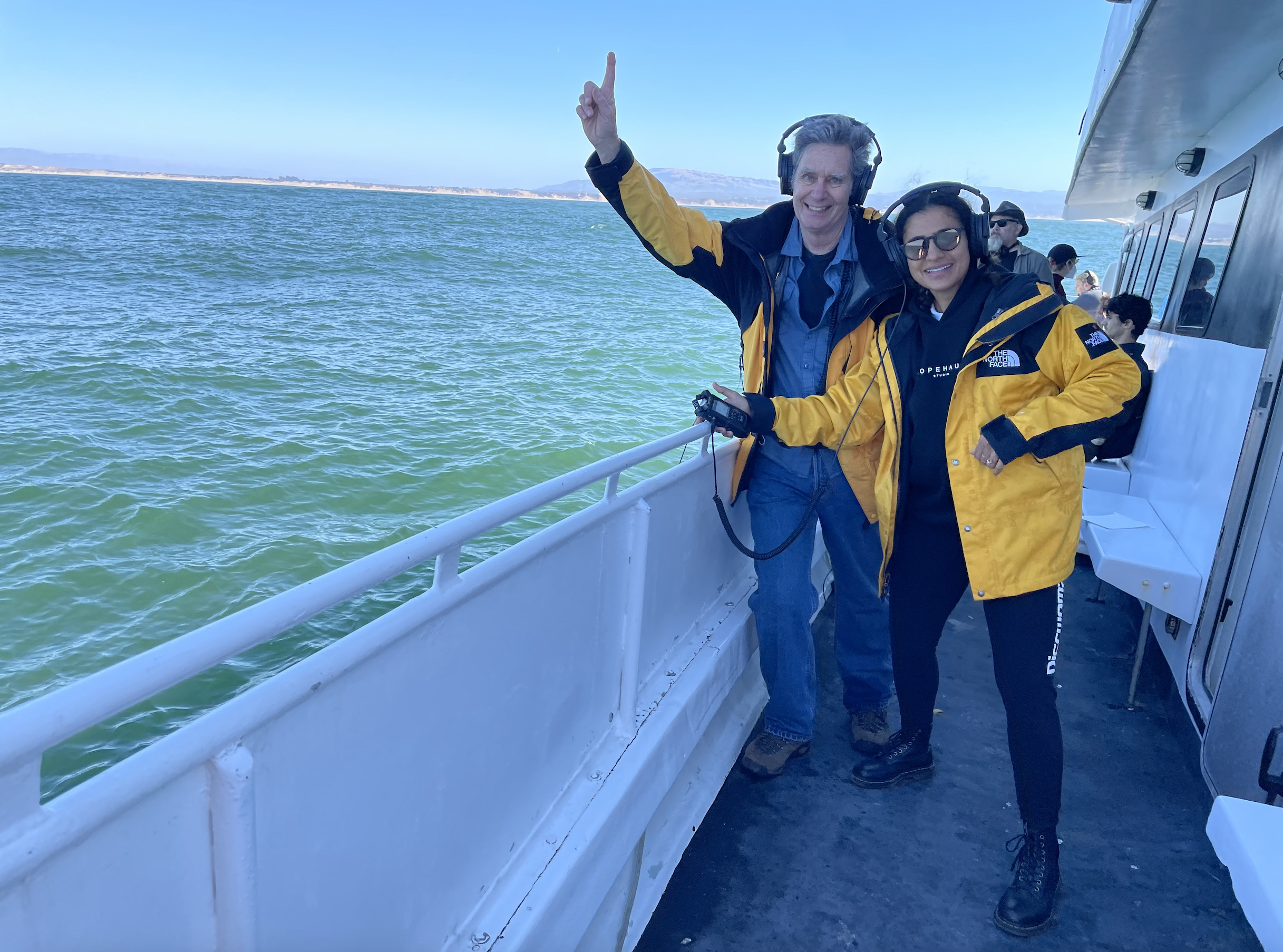
You can listen to an isolated clip of a whale sound from Monterey here (without noise reduction):
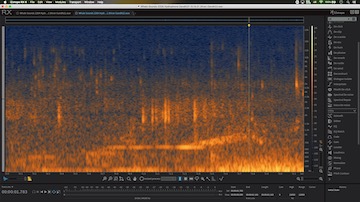
You can listen to an isolated clip of a whale sound from Monterey here (with noise reduction):

Whale sounds exist between 500-1000 Hz based on the recordings I have from Monterey.

MICROSAMPLING.
I use the process of microsampling to create snares, kicks, hats, synths, bass tones and more by repurposing audio material into a form that can then be edited into something else.






BEATMAKING.
Here are some of the whale samples, and the sounds I sculpted from them:
Whale Sample 1: and 2: were used to create a drone:
Whale Sample 3: and 4: were used to create a set of hi-hats:
Whale Sample 5: was used to create a synth:
Whale Sample 6: and 7: were used to create more hi-hats:
Whale Sample 8: was used to create a kick:
And whale sample 9: was used to create a snare:
END RESULT.
And here is the final beat!
Thank you to the incredible teaching team Chris Chafe, Nick Virzi, Clara Allison and Barbara Nerness and to our class for an awesome quarter! See you in 2022!
In 220A, my favorite part of the course was building the hydrophone and recording whale sounds in Monterey. To that end, I was inspired to start researching more opportunities to be able to record marine life and animals underwater, to serve as Sound MANA Volume 2. I started my research at the end of the fall quarter, and the project will continue as an independent study into the winter quarter at Stanford CCRMA. The long term project now will be to provide a nature sound pack from all 4 elements: Earth, Water, Air and Fire. We may have to go to space next!
BACKGROUND.

Last year, I spent two weeks in a forest in Woodstock, NY field recording nature sounds from streams, rocks, mushrooms, bark, sticks, rusted metal and leaves. The idea was to collect as much raw audio material sourced from nature as possible, to then sculpt into recognizable production one-hits like snares, kicks, hi-hats, and toms, or create virtual instruments like chord, bass or drone synthesizers. While there are many packs available full of raw nature field recordings, few go the extra step to sculpt and process these sounds into usable production files that sound like comparable drums or electronic instruments in the industry.

Taking this a step further, I am very interested in the power of music to heal and uplift, therefore changing the planet and making the world a better place by connecting directly with the individual. Lyrics, for example, have the power to uplift or oppress - we can be singing back to ourselves lyrics that give us more life, or that keep us constricted and stuck, perpetuating stereotypes or ideas that hold us back from joy, potential or growth. Beyond lyrics, I started asking myself the question, how else might we contribute to the sounds we hear being uplifting, organic...healthy even! In the same way consumers are waking up to asking questions about their food sources - wondering if the food is organic, non-GMO, pesticide free etc...we currently lack a conversation in the music industry about where our beats come from! My intention with Sound MANA (music, art, nature, awareness) Volume 1 was to create an offering of useful production sound tools that were all made and sculpted from organic nature field recordings. To that end, the very sonic material you as the producer would be creating with has a purity to it, a sonic naturalness to it, a richness in depth and sound. This is very unique and takes a lot of work, providing enormous value to the consumer of the pack and the industry of music creators at large.

You can see an interview I did with Splice about this very topic here.
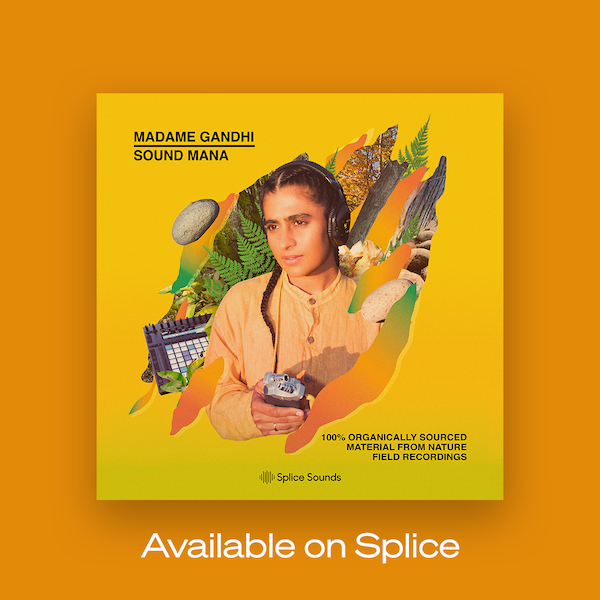
In June 2021, my collaborators and I released the pack on Splice.com, and in November 2021, we were awarded the New.Wav award, for innovation and boundary-pushing in the music industry.
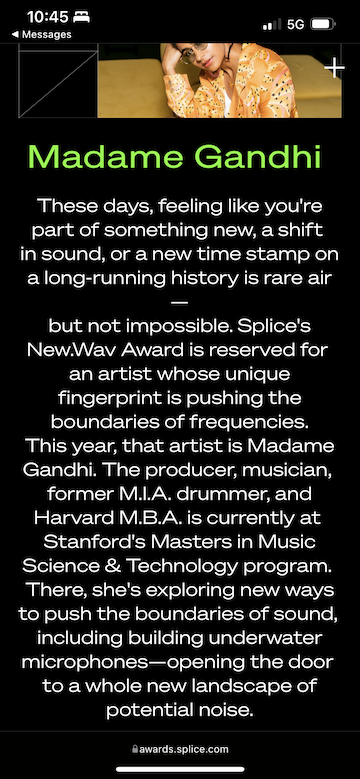

You can listen to the beat that I made using 100% organically sourced sound material from nature field recordings here:
And you can listen to some of the individual loops I made here:
RESEARCH.
For this project, I have spoken to:
EXAMPLE. Exumas Cay, Bahamas.
I also went out to the Bahamas during Thanksgiving Break and recorded the sound of Dolphins under water as well. The Bahamas are home to enmorous amounts of underwater research and development, including the premise for the new National Geographic piece "Welcome To Earth", for which I attended the screening in Los Angeles in December.
In the winter quarter, I will speak to:
And explore the idea of visiting:
Research Materials Include:
PLAN.
The plan forward is to create a few more hydrophones, research the best underwater recording gear options, and travel to be able to record sounds from under water marine life as well as aquatic above ground animals. I'd like to record whales, dolphins, seals, seagulls, waves crashing, as well as research and identify reef and under water animals that make loud noises. Then I would travel to those places to collect sound, or collaborate remotely with others who are local to see if they can capture audio for me. From there, I treat the audio, clean it up, and start sculpting the raw audio into drum hits, synths, effects and loops!
PROCESS.
DELIVERABLES.
Final deliverables would include a pack to be handed off to Splice.com for commercial release. The research and final sonic composition materials would be presented to my advisor and perhaps shared at a future CCRMA Colloquium or 220A class!
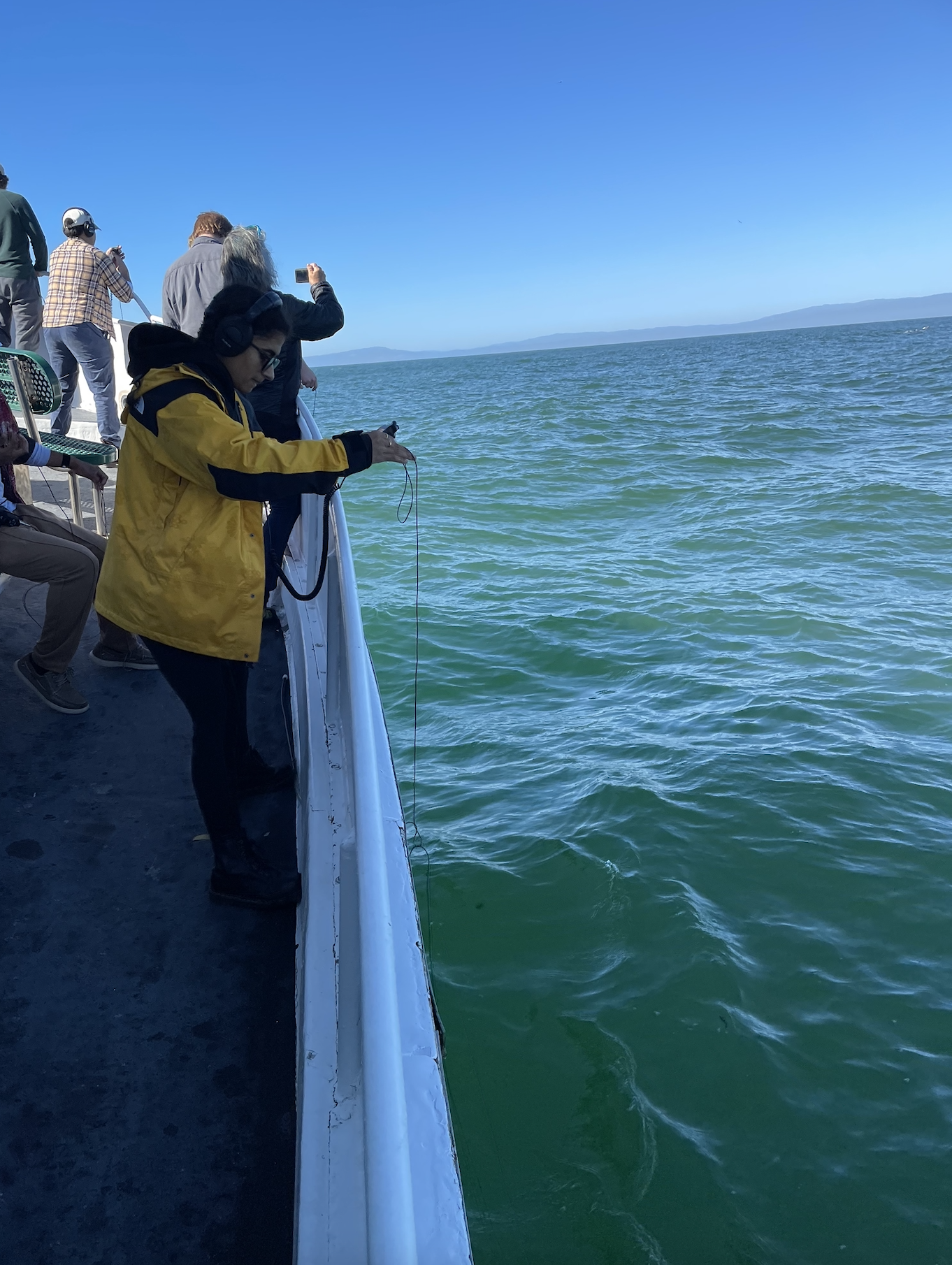
TIMESTAMP.
(December 10th, 2021, 10:43pm)